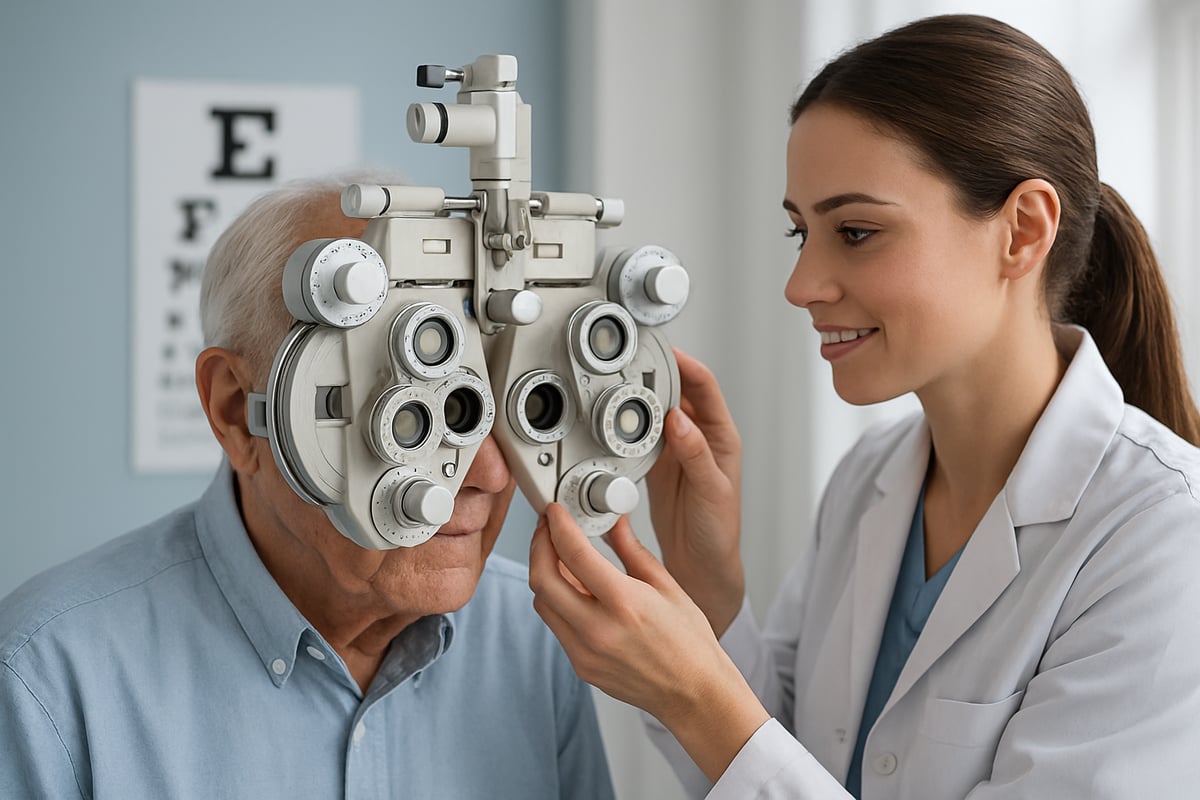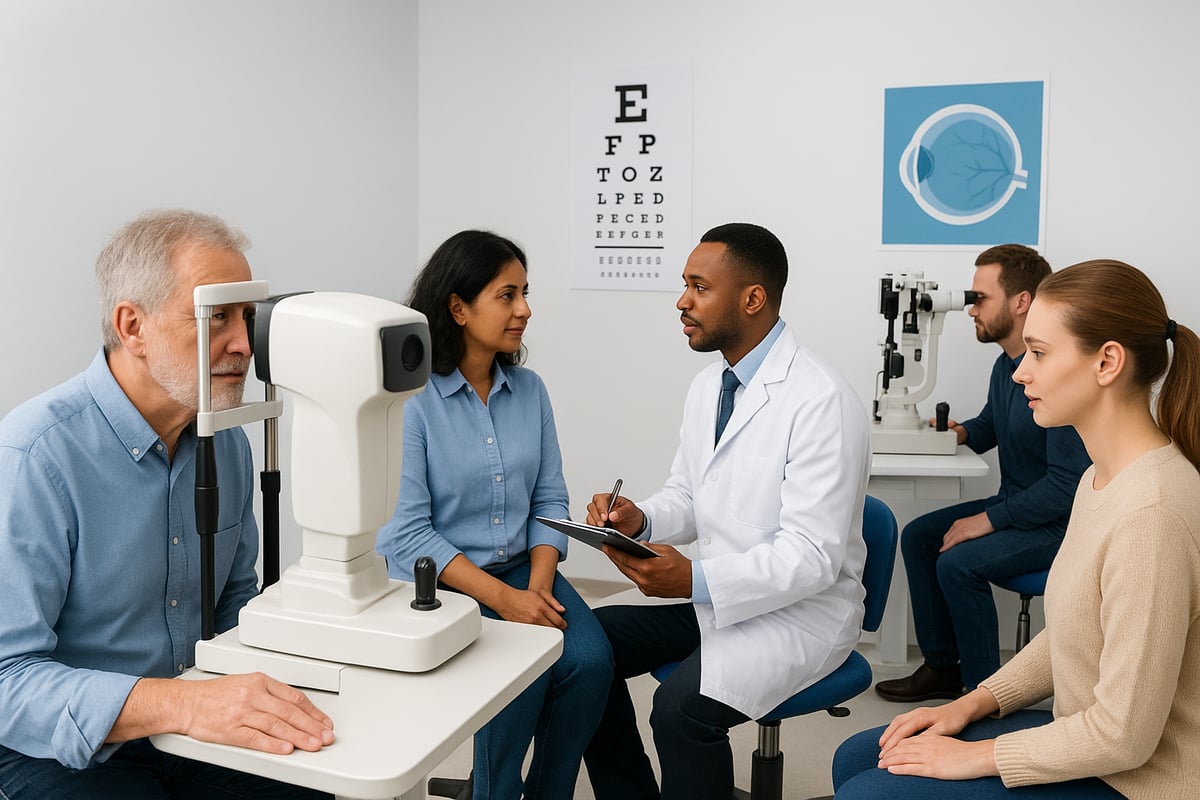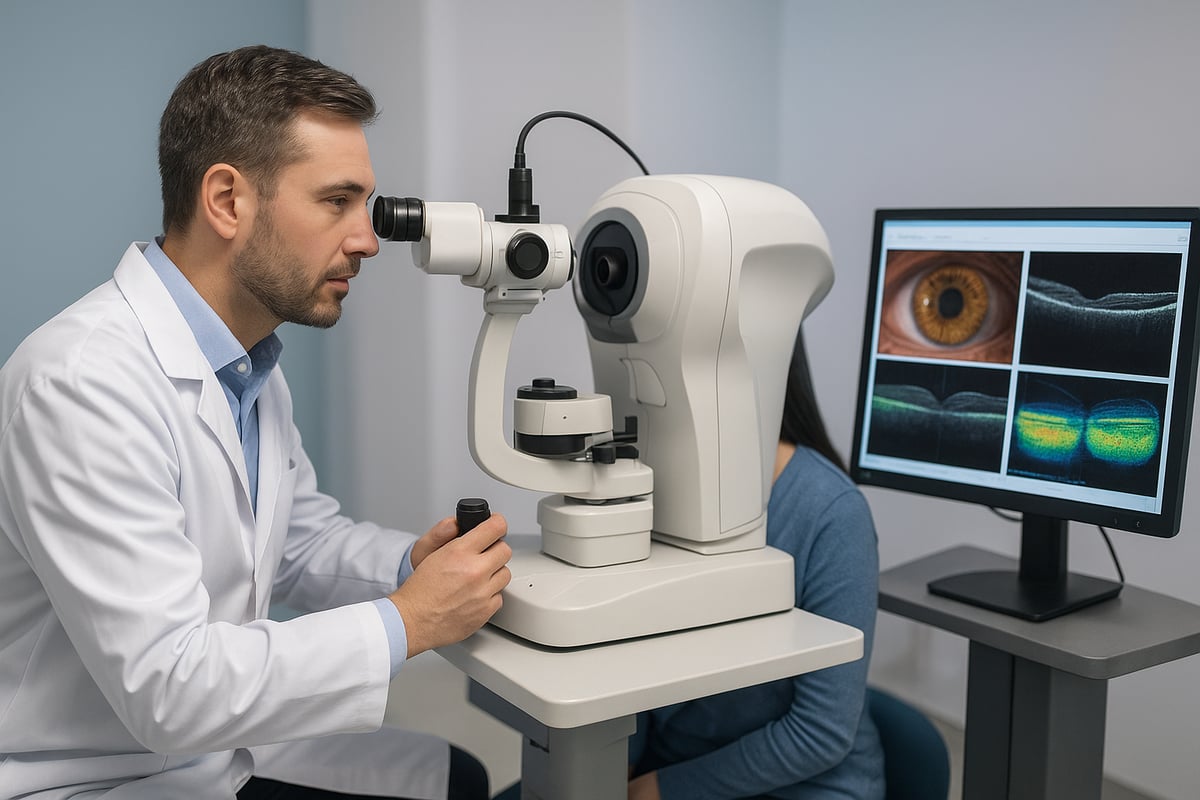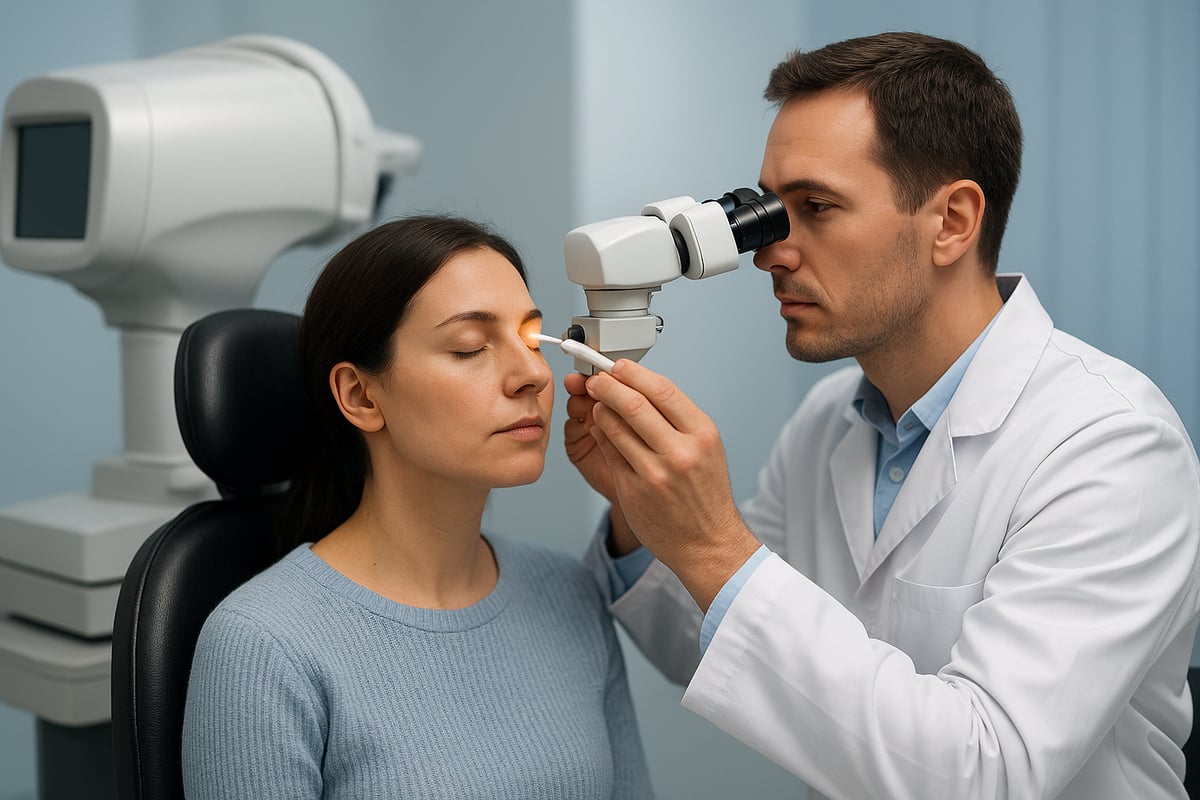Every year, millions face the reality of loss eye, a condition that can strike suddenly or develop gradually, affecting people of all ages across the globe. Loss eye refers to partial or total loss of vision, whether it comes on quickly or over time, and impacts both central and peripheral sight. This guide offers an up-to-date overview of the causes, symptoms, and treatments for loss eye, including the promising benefits of microacupuncture for degenerative conditions of the retina and optic nerve. Discover how to recognize risks, explore solutions, and take proactive steps to safeguard your vision in 2025.
Understanding Eye Vision Loss: Definitions and Types
Vision is one of our most vital senses, yet millions face the reality of loss eye each year. Understanding the nature and types of vision loss is essential for recognizing risks and exploring solutions. Both sudden and gradual changes can signal deeper eye health issues, making awareness the first step toward protection.

What Is Eye Vision Loss?
Loss eye refers to a reduction or complete loss of vision that can affect one or both eyes. This condition ranges from partial impairment, such as difficulty seeing fine details, to total blindness. Vision loss may occur suddenly, as with a retinal artery blockage, or develop gradually over time due to chronic diseases.
Central vision loss impacts the ability to see straight ahead, making tasks like reading challenging. Peripheral vision loss affects side vision, often resulting in tunnel vision. Legal blindness is typically defined as visual acuity of 20/200 or less in the better-seeing eye, even with correction. For example, macular degeneration often leads to central vision loss, while glaucoma primarily causes peripheral vision loss.
Microacupuncture is emerging as a promising adjunct therapy for degenerative conditions like macular degeneration and optic nerve disorders. By stimulating targeted points, it may help preserve or improve vision in individuals experiencing chronic loss eye.
Types and Classifications of Vision Loss
Vision loss can be classified by onset, pain, laterality, and visual field patterns. Sudden loss eye often signals urgent conditions, while progressive loss may indicate chronic disease.
| Type | Characteristics | Example |
|---|---|---|
| Sudden vs. Progressive | Rapid onset vs. slow decline | Retinal artery occlusion vs. diabetic retinopathy |
| Painless vs. Painful | Inflammatory or vascular causes | Optic neuritis (painful), glaucoma (painless early) |
| Unilateral vs. Bilateral | One eye vs. both eyes affected | Retinal detachment (unilateral), cataracts (bilateral) |
| Visual Field Patterns | Tunnel vision, blind spots, etc. | Glaucoma, macular degeneration |
Statistics show that sudden loss eye affects up to 1 in 10,000 people each year. For instance, a retinal artery occlusion can cause abrupt blindness in one eye, while diabetic retinopathy leads to gradual vision decline over several years.
Microacupuncture is particularly beneficial for progressive degenerative diseases, supporting retinal and optic nerve health when traditional treatments are limited.
Common Symptoms and Early Warning Signs
Recognizing the symptoms of loss eye early can make a significant difference in outcomes. Common warning signs include:
- Blurred or distorted vision
- Sudden appearance of floaters or flashing lights
- Dark curtains or blind spots in the field of vision
- Eye pain, redness, or unusual discharge
- Changes in color perception or difficulty seeing at night
These symptoms may indicate underlying conditions such as retinal detachment, optic neuritis, or other serious eye diseases. Noticing a curtain-like shadow can be a sign of retinal detachment, warranting immediate medical attention.
It is crucial to seek professional evaluation if any of these signs appear. For a detailed overview of eye deficiencies and related symptoms, see Eye Deficiencies and Symptoms.
Major Causes of Eye Vision Loss in 2025
Understanding the major causes of loss eye is essential in 2025, as the range of risk factors continues to expand. Both traditional and emerging threats contribute to the global burden of vision impairment, impacting millions of lives. By exploring medical, environmental, genetic, and new causes, you can better identify risks and pursue the right solutions.

Medical and Disease-Related Causes
Medical conditions remain the top contributors to loss eye worldwide. Retinal disorders—such as macular degeneration, retinal detachment, and diabetic retinopathy—are leading culprits, especially among older adults. Macular degeneration alone is the primary cause of vision loss in adults over 60, according to UCLA Health.
Optic nerve diseases, including glaucoma, optic neuritis, and ischemic optic neuropathy, often result in progressive or sudden loss eye. Vascular events like eye stroke (central retinal artery or vein occlusion) and transient ischemic attacks can also cause abrupt changes in vision.
Infections and inflammatory conditions, such as uveitis and keratitis, may trigger acute or chronic vision changes. Early detection and management of these diseases are crucial to preventing permanent loss eye.
Environmental and Lifestyle Factors
Environmental and lifestyle factors significantly impact the risk of loss eye. Chronic ultraviolet (UV) exposure and prolonged blue light from screens can damage retinal cells. Smoking is a major risk factor, increasing the likelihood of macular degeneration and other degenerative conditions.
Poor nutrition, especially vitamin A deficiency, weakens ocular health. Occupational hazards—such as chemical exposure or eye injuries in industrial settings—elevate risk. For example, studies show higher rates of loss eye among industrial workers than in other professions.
For a deeper exploration of underlying factors and how they contribute to vision decline, review the Causes of Vision Deterioration resource.
Genetic and Age-Related Factors
Genetics and age play a critical role in the development of loss eye. Hereditary conditions like retinitis pigmentosa and Stargardt disease often begin in childhood or adolescence and progress over time. A family history of vision disorders raises personal risk significantly.
As people age, lens opacification (cataracts) and reduced blood flow to the retina become increasingly common. Statistics reveal that one in four people over age 75 experience significant vision impairment, making loss eye a major concern for the elderly.
For many, these genetic and age-related changes lead to a gradual decline in vision, underscoring the need for regular screening and proactive care.
Less Common and Emerging Causes
Beyond the main categories, several rare and emerging factors contribute to loss eye. Certain medications, such as corticosteroids, can increase the risk of cataracts. Tumors affecting the optic pathway may cause progressive or sudden vision reduction.
Autoimmune diseases—including multiple sclerosis and lupus—sometimes result in optic nerve damage or inflammation that leads to vision loss. Post-COVID-19 complications affecting the eye have also been reported in recent years.
One promising approach for managing degenerative vision conditions is microacupuncture. This therapy has shown benefits for loss eye related to the retina and optic nerve by improving blood flow and stimulating dormant cells. Patients with conditions like glaucoma, macular degeneration, and eye stroke have reported positive outcomes with microacupuncture, especially when used alongside conventional treatments.
Diagnosis and Evaluation: How Vision Loss Is Identified
Early and accurate diagnosis is essential for anyone experiencing loss eye symptoms. Identifying the underlying cause quickly can make the difference between reversible and permanent vision changes. Modern diagnostic techniques, paired with specialized therapies like microacupuncture, offer hope for those at risk of degenerative vision conditions.

Comprehensive Eye Examination Process
A thorough eye exam is the first step in evaluating loss eye. The process begins with a detailed patient history, focusing on the onset, duration, and nature of symptoms. Doctors assess visual acuity, test visual fields, and examine the eye with a slit lamp.
Intraocular pressure measurement is crucial for detecting glaucoma, a common cause of loss eye. The fundus examination helps reveal issues like diabetic retinopathy or retinal detachment. For degenerative vision conditions, microacupuncture assessment may be considered as part of an integrative approach, especially for retinal and optic nerve disorders.
- Visual acuity test
- Visual field assessment
- Slit lamp and fundus examination
- Intraocular pressure check
Early detection can lead to timely intervention and better outcomes for loss eye.
Advanced Diagnostic Tests and Imaging
When initial tests point to a possible loss eye condition, advanced imaging provides deeper insights. Optical coherence tomography (OCT) is widely used to visualize retinal layers and detect early macular degeneration. Fluorescein angiography assesses blood flow in the retina and can pinpoint vascular causes.
Electroretinography evaluates retinal function, while MRI or CT scans are used when optic nerve or brain involvement is suspected. For those with suspected degenerative diseases, referencing the Degenerative Disease in Eyes Overview can help clarify complex findings and guide treatment strategies.
Microacupuncture has shown promise in supporting retinal and optic nerve health, complementing these advanced diagnostics for chronic loss eye cases.
When to Seek Immediate Medical Attention
Certain symptoms of loss eye demand urgent care. Sudden vision loss, especially with pain, flashes of light, new floaters, or a curtain-like shadow, can signal emergencies like retinal detachment or vascular occlusion.
If loss eye is accompanied by headache or jaw pain, giant cell arteritis may be a concern and requires quick intervention. Rapid treatment, ideally within hours, can sometimes restore vision or prevent further decline.
Microacupuncture may support recovery in some acute and degenerative cases, but immediate conventional care is critical. Timely diagnosis and response are vital to preserving sight and reducing the long-term impact of loss eye.
Solutions and Treatments for Eye Vision Loss
Finding the right solution for loss eye depends on the underlying cause and how quickly intervention begins. Today, medical advances and integrative therapies offer hope for preserving and even restoring vision. The approach often combines traditional treatments, innovative methods such as MicroAcupuncture, lifestyle adjustments, and ongoing support to maximize outcomes.

Conventional Medical and Surgical Treatments
For loss eye caused by medical conditions, conventional treatments remain the first line of defense. Medications such as anti-VEGF injections are widely used for macular degeneration, while corticosteroids help manage inflammation in optic nerve and retinal diseases. Laser therapy is common for diabetic retinopathy and sealing retinal tears. Surgical approaches—like cataract extraction, vitrectomy, or glaucoma shunt surgery—can restore or protect vision in many cases.
Success rates vary depending on the condition and how early treatment begins. For example, early cataract surgery can restore vision in about 90% of cases. Exciting new developments include novel drugs that promote retinal nerve regeneration, which may restore vision in degenerative diseases. You can read more about these advances in retinal therapy restores vision.
Integrative and Alternative Therapies: The Role of MicroAcupuncture
Integrative therapies like MicroAcupuncture offer hope for those with degenerative retinal or optic nerve conditions contributing to loss eye. MicroAcupuncture involves stimulating specific points around the eyes and hands to enhance blood flow and support the function of dormant retinal cells.
Clinical experience and case studies suggest MicroAcupuncture may help improve or stabilize vision in macular degeneration, retinitis pigmentosa, glaucoma, and eye stroke. Some patients report regaining functional vision, enabling greater independence in daily life. While not a replacement for conventional care, MicroAcupuncture can be a valuable adjunct when performed by qualified practitioners.
Lifestyle Modifications and Supportive Care
Adopting healthy habits is crucial in managing loss eye and supporting overall eye health. A diet rich in antioxidants, such as lutein and omega-3s, may protect the retina and slow progression in conditions like macular degeneration. Smoking cessation and regular exercise improve vascular health, reducing eye disease risk.
Protective eyewear and blue light filters safeguard against environmental hazards. For those with persistent vision loss, low vision aids like magnifiers and adaptive technology can greatly enhance quality of life. Even small changes in daily routines can make a meaningful difference.
Rehabilitation and Ongoing Management
Rehabilitation is key for anyone experiencing loss eye, especially when vision cannot be fully restored. Vision therapy and occupational therapy help individuals adapt to changes, maintain independence, and relearn essential skills. Psychological support and counseling address the emotional impact of vision loss, helping patients and families adjust.
Community resources, such as support groups and mobility training, offer practical and emotional assistance. Regular follow-up with eye care professionals ensures ongoing management and early detection of any new issues. Early rehabilitation is linked to improved independence and overall life satisfaction.
Prevention Strategies and Eye Health Maintenance
Protecting your vision starts with adopting smart prevention strategies and ongoing care. As loss eye becomes more common worldwide, proactive habits can make a significant difference in preserving sight and slowing disease progression. Taking action today can reduce your risk for future vision problems.
Proactive Eye Health Habits
Routine eye exams are essential for early detection of loss eye. Annual screenings can catch silent conditions like glaucoma before they cause irreversible damage. Make it a habit to wear sunglasses with UV protection outdoors and safety eyewear when working with hazardous materials.
Managing chronic conditions like diabetes and high blood pressure is crucial. These diseases can quietly contribute to loss eye over time. Limiting screen exposure and practicing the 20 20 20 rule—looking away every 20 minutes for 20 seconds at something 20 feet away—helps reduce digital eye strain.
For more prevention tips and ongoing care, the Care for Eye Health guide offers actionable steps to maintain vision. Microacupuncture, an integrative approach, is gaining attention for supporting retinal and optic nerve health in degenerative conditions. It may help preserve function and delay progression for those at risk.
Diet, Supplements, and Lifestyle Choices
Nutrition plays a vital role in defending against loss eye. Diets rich in antioxidants, including vitamins A, C, and E, as well as zinc, lutein, and zeaxanthin, can reduce the risk of age related macular degeneration. The Mediterranean diet, featuring leafy greens, fish, and healthy fats, has shown protective effects.
Avoiding tobacco and limiting alcohol intake are key lifestyle choices. Smoking, in particular, is a major risk factor for loss eye and accelerates degenerative changes. Staying hydrated supports eye moisture and function.
Microacupuncture complements these strategies by enhancing circulation and stimulating retinal activity. Combined with proper nutrition and healthy living, it offers a comprehensive plan for safeguarding vision.
Public Health Initiatives and Future Trends
Community vision screening programs are vital for detecting early loss eye, especially in schools and workplaces. These initiatives identify issues before they become severe and connect individuals to treatment.
Advances in gene therapy are opening new frontiers for inherited vision loss. For example, gene therapy for severe eye disease is providing hope for those with genetic retinal conditions. Artificial intelligence is also being used for rapid, accurate detection of vision changes.
The future of loss eye prevention will rely on a blend of technology, public education, and integrative therapies like microacupuncture. Staying informed and engaged with these trends empowers you to protect your eyesight for years to come.
Support Resources and Living with Vision Loss
Living with loss eye can be emotionally challenging, but support is available to help individuals and families adapt. Building a strong network is vital for managing the psychological impact of vision changes and maintaining independence.
Emotional and Social Support Systems
Coping with loss eye often starts with acknowledging the emotional toll. Feelings of anxiety, frustration, or isolation are common, but no one has to face them alone. Family involvement, open communication, and professional counseling can help individuals process these changes.
Peer support groups, both in-person and online, connect people with shared experiences. Organizations such as the National Federation of the Blind offer resources and networks for those adjusting to loss eye. Integrative therapies like microacupuncture have shown benefits not only for degenerative vision conditions affecting the retina and optic nerve but also for boosting hope and motivation during rehabilitation.
Assistive Technology and Adaptation Tools
Modern technology empowers people living with loss eye to maintain independence. Screen readers, magnification software, and voice-activated smart home devices make daily tasks more accessible. Orientation and mobility training helps individuals navigate safely and confidently.
Vocational rehabilitation services offer job training and workplace adaptations, supporting continued employment. Smartphone apps now provide navigation, reading assistance, and reminders, transforming how people with loss eye approach everyday challenges. By embracing adaptive tools and ongoing learning, individuals can thrive and stay connected to their communities.
If you or someone you care about is navigating the challenges of vision loss, it’s important to know you’re not alone—and proactive steps can make a real difference. As we explored in this guide, understanding the causes and recognizing early signs are crucial, but exploring effective treatments like MicroAcupuncture offers new hope, especially for degenerative conditions such as macular degeneration, retinitis pigmentosa, and glaucoma. If you’re ready to take control of your eye health and learn whether our tailored approach in Tampa could help restore your vision, I invite you to Schedule A Free Phone Call.
